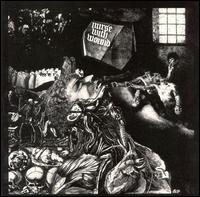Industrial music is a genre of music that draws on harsh, mechanical, transgressive or provocative sounds and themes. AllMusic defines industrial music as the "most abrasive and aggressive fusion of rock and electronic music" that was "initially a blend of avant-garde electronics experiments and punk provocation". The term was coined in the mid-1970s with the founding of Industrial Records by members of Throbbing Gristle and Monte Cazazza. While the genre name originated with Throbbing Gristle's emergence in the United Kingdom, artists and labels vital to the genre also emerged in the United States and other countries.

Comte de Lautréamont was the nom de plume of Isidore Lucien Ducasse, a French poet born in Uruguay. His only works, Les Chants de Maldoror and Poésies, had a major influence on modern arts and literature, particularly on the Surrealists and the Situationists. Ducasse died at the age of 24.
Glitch is a genre of electronic music that emerged in the 1990s which is distinguished by the deliberate use of glitch-based audio media and other sonic artifacts.

Nurse with Wound is the main recording name for British musician Steven Stapleton. Nurse with Wound was originally a band, formed in 1978 by Stapleton, John Fothergill and Heman Pathak. The band's work has explored genres such as industrial, noise, dark ambient, and drone.

Current 93 are an English experimental music group, working since the early 1980s in folk-based musical forms. The band was founded in 1982 by David Tibet, who has been Current 93's only constant member.

The Nurse with Wound list is a list of musicians and bands that was included with Chance Meeting on a Dissecting Table of a Sewing Machine and an Umbrella (1979), the first album by Nurse with Wound. There are 291 entries on the list. The list was expanded with Nurse with Wound's second album, To the Quiet Men from a Tiny Girl (1980).

Area – International POPular Group, most commonly known as Area or AreA, is an Italian progressive rock, jazz fusion, electronic, experimental group formed in 1972 by singer Demetrio Stratos and drummer Giulio Capiozzo. They are considered one of the most respected, innovative and important bands of the blooming 1970s Italian progressive rock scene.
Christoph Heemann is a German musician.

To the Quiet Men from a Tiny Girl is the second album by Nurse With Wound and the last to be made by the founding trio of Steven Stapleton, John Fothergill, and Heman Pathak. The album also features contributions from French avant-garde musician Jacques Berrocal. It was recorded by The Bombay Ducks, an alias for Nicky Rogers and Vic Ball, the former of whom had facilitated the recording of the group's first album, Chance Meeting on a Dissecting Table of a Sewing Machine and an Umbrella. The album's title comes from Tolerance's album Anonymlink

Merzbild Schwet is the third album by British industrial band Nurse With Wound.

Insect and Individual Silenced was the fourth album by Nurse With Wound.

Homotopy to Marie is the fifth album by Nurse with Wound, released in 1982.

Musik von Harmonia is the debut album from the influential German krautrock group Harmonia, released in January 1974 by Brain Records. Formed by the addition of Neu! guitarist Michael Rother to Cluster, they recorded the album from June to November 1973 in Cluster's Forst recording studio. It was self-produced by the group using a primitive mixer and three tape recorders.

Deluxe is the second album from the West German krautrock group Harmonia, consisting of Neu! guitarist Michael Rother and the Cluster duo of Hans-Joachim Roedelius and Dieter Moebius. It was recorded in June 1975 in Harmonia's studio in Forst, Germany. It was first released on the Brain Records label in 1975.

Nature Unveiled is an early full-length studio album released by the English group Current 93.

Christopher Alvin Stapleton is an American singer-songwriter, guitarist, and record producer. He was born in Lexington, Kentucky, and grew up in Staffordsville, Kentucky. In 2001, Stapleton moved to Nashville, Tennessee to get an engineering degree from Vanderbilt University but dropped out to pursue his career in music. Subsequently, Stapleton signed a contract with Sea Gayle Music to write and publish his music.

Maldoror is a solo album by cellist Erik Friedlander recorded in Berlin and released on the Brassland label featuring music inspired by the French poet Comte de Lautréamont's Les Chants de Maldoror.
Chance Meeting may refer to:

Nuage articulé(Articulated cloud) is a surrealist object in the form of an assemblage by Wolfgang Paalen produced in 1937. The object consists of an umbrella covered with natural sponges and was one of the most significant objects at the Exposition Internationale du Surréalisme, which was held in Paris at the Wildenstein Gallery in 1938. It was also exhibited in numerous later exhibitions, such as Amsterdam (1938), Cambridge (1938) and Mexico City (1940). Many photographers have captured the item in its context, Man Ray, Kurt Husnik, Josef Breitenbach and Denise Bellon.
Lucie Thésée was a surrealist poet from the Antilles, who settled in Martinique and participated in the group around the Martinican cultural review Tropiques.















